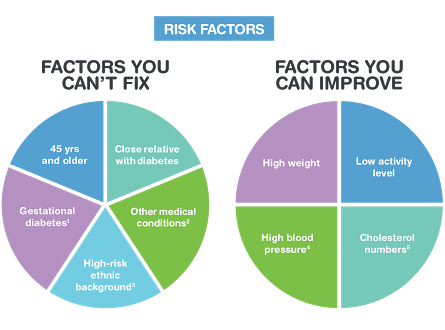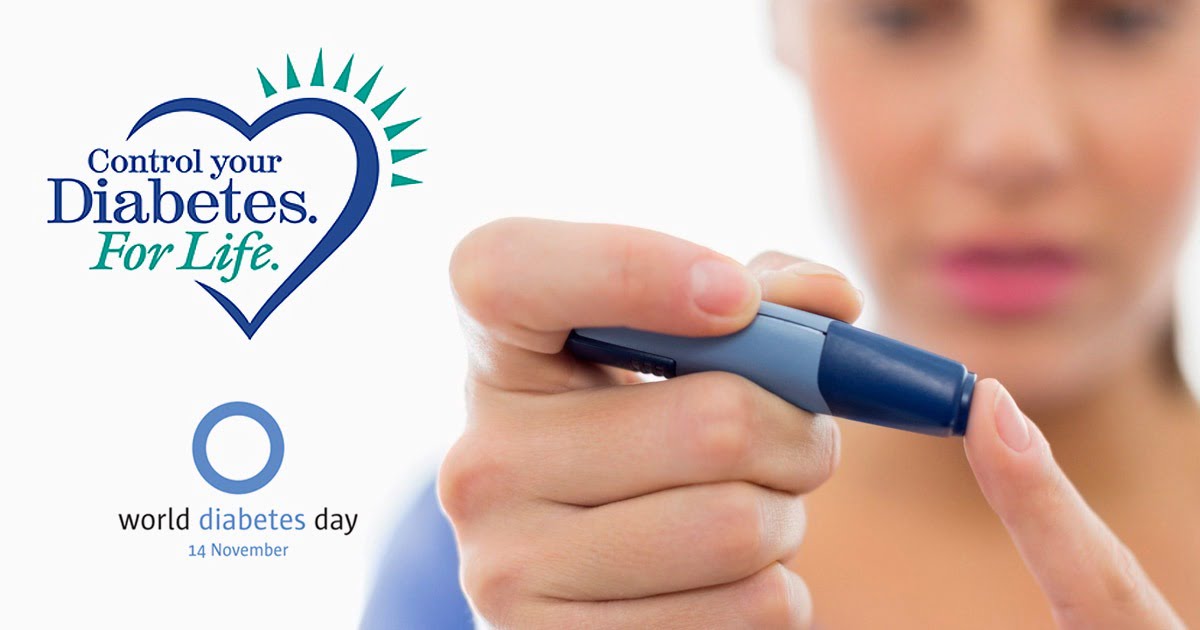According to the World Diabetic Foundation, one in two people currently living with diabetes is unaware of its presence. What makes the situation more complicated is that our healthcare system is unable to diagnose the presence of the DIABETES at an early stage. Early identification is the key to effective management of the disease. Check the following diabetes risk factors and find out if you are at risk….

Diabetes Risk Factors : TYPE 1 DIABETES
Type 1 diabetes, once known as “juvenile diabetes” or “insulin-dependent diabetes”, is an autoimmune disease in which a person’s pancreas produces little or no insulin, a hormone that enables people to get energy from food. It represents around 10% of all cases of diabetes, often begins in childhood, adolescence or young adulthood, although it can occur or be diagnosed later. Diabetes risk factors for this type are still being researched. However, the possibilities are –
FAMILY HISTORY
Having a family member (parent or sibling or any relative) with type 1 diabetes, slightly increases the risk of developing the disease. In that case, one should get checked, a simple blood test can diagnose it.
DIETARY FACTORS
Early cessation of breastfeeding and early exposure to cow’s milk, low vitamin D consumption, drinking water that contains nitrates and introduction of cereal and gluten into a baby’s diet before 4 months of age. Although none of these factors has been shown to directly cause type 1 diabetes.
ENVIRONMENTAL FACTORS
Various environmental factors and exposure to some viral illness likely play some role in type 1 diabetes.
GEOGRAPHY
The incidence of type 1 diabetes tends to increase as we travel away from the equator. Some countries like Finland and Sweden, have higher rates of type 1 diabetes.
GENETICS
The presence of certain genes indicates an increased risk of developing type 1 diabetes. But none of these genes cause diabetes on their own. Instead, they interact with environmental factors like toxins, viruses and each other to increase risk.

Diabetes Risk Factors : TYPE 2 DIABETES
Type 2 diabetes once known as “non insulin-dependent diabetes mellitus” (NIDDM) or “adult-onset diabetes”, is where the pancreas doesn’t produce enough insulin or the body’s cells don’t react to insulin. It is more prevalent than type 1 diabetes and is therefore seen in roughly 90% of all diabetes cases. Risk factors associated with it-
FAMILY HISTORY
Type 2 diabetes has a hereditary factor. If you have someone in your close family member (a parent or sibling) who has diabetes, chances are strong you’ll get it, too.
BEING OVERWEIGHT
Being overweight is an established risk factor for type 2 diabetes. People who are obese have added pressure on their body’s ability to use insulin to properly control blood sugar levels and are therefore more likely to develop diabetes. Because of the rise in obesity among U.S. children, this type is affecting more teenagers.
SEDENTARY LIFESTYLE
Physical activity has several health benefits, one of them being that it can help you avoid type 2 diabetes, if you are prone to it. The less active you are, the greater your risk. Being physically active, you can control your weight as your body uses up glucose as energy and make your cells more sensitive to insulin.
UNHEALTHY DIET
A diet lacking fibre, high in fat and carbohydrates, excessive calorie intake and bad cholesterol increases the likelihood of type 2 diabetes.
INCREASING AGE
Diabetes risk factor increases as you get older because you tend to get physically inactive, lose muscle mass and gain weight with age. Your risk starts to rise at age of 45 and after 65 years of age, your risk increases exponentially.
But in recent times, type 2 diabetes has also been seen among children, adolescents and younger adults.
ETHNICITY
Although it’s unknown why, certain ethnic groups (Native Americans, Hispanics, African-Americans, Pacific Islanders and Asian-Americans) are at greater risk for developing type 2 diabetes than others.
HIGH BLOOD PRESSURE
People with high blood pressure (hypertension), over 140/90 mmHg, have around 70% increased risk of developing type 2 diabetes, according to researches. High blood pressure can lead to and make worse many complications of diabetes, including diabetic eye disease and kidney disease.
IMPAIRED GLUCOSE TOLERANCE (IGT)
Impaired Glucose Tolerance means that blood glucose is raised beyond normal levels. Prediabetes is a milder form of this condition. 1-3 out of every 4 people with IGT will develop diabetes within a decade.
HISTORY OF GESTATIONAL DIABETES
If you developed gestational diabetes during pregnancy, your risk of developing prediabetes and type 2 diabetes later in life increases.
POLYCYSTIC OVARIAN SYNDROME (PCOS)
In PCOS (a common condition characterized by irregular menstrual periods, excess hair growth and obesity), many cysts form in ovaries and one possible cause is insulin resistance. If you have PCOS, you may be insulin resistant and therefore at risk for developing type 2 diabetes.
ABNORMAL CHOLESTEROL AND TRIGLYCERIDE LEVEL
If you have low levels of HDL or good cholesterol and high levels of triglycerides, your risk of type 2 diabetes is higher.
If you have any of the above risk factors, ask your health care provider to test you for diabetes
Also Read : How to Control Diabetes ?
